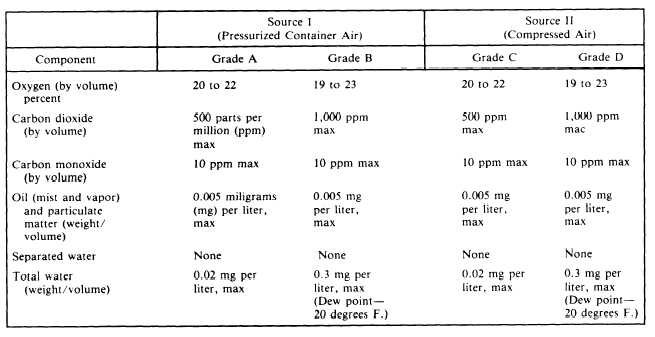be strong acid, alkaline, or otherwise corrosive to the internal surfaces or lubricants of the compressor. In addition, gases or fumes may be prohibited by the end-use process, such as medical gases or breathing air and for environmental or odor reasons. Intakes near normal flow paths of engine exhausts should be avoided.
Oil
Oil fumes, vapor, or mist can be as difficult to handle as particulate or gases. Even though many types of compressors are oil lubricated, the oil ingested may not be compatible and compressor load may be increased.
Water
Waste and water vapor are always present in air intakes. Installation of intakes should prevent the accumulation of free water. Free water ingested into the compressor causes damage to internal components.
Since water vapor with chemical content corrodes steel piping, precautions must be taken to protect materials from corrosion. Galvanizing, applying protective coatings, or using plastic or stainless steel piping for air intakes are some suggested methods to retard or prevent corrosion. Also be sure to install intakes in a manner that
SPECIFIC AIR QUALITY REQUIREMENTS
The diverse uses of air are accompanied by specific air quality requirements. These vary from high purity requirements through the need to introduce materials into a system to be carried along with the air. This section will discuss these specific air quality requirements.
Commercial Air
Commercial compressed air is graded according to its purity. The purest is grade A running alphabetically to grade J, the least pure. The Compressed Gas Association has set guidelines for the grading of commercial compressed gas. The application of commercial compressed air is varied and generally specified for each individual installation by engineers. The full extent of the quality requirements for commercial compressed air applications can be located in the Compressed Air Association publication Commodity Specification for Air, G-7.1 (ANSI 286.1-1973).
Breathing Air
Breathing air must be of high quality for obvious reasons. Federal Specification BB-A-1034 excludes rainfall, snow, or spray by applying a (fig. 11-2) outlines the specific requirements for weather hood. breathing air.

Figure 11-2. - Breathing air requirements, Federal Specification BB-A-1034A AM 1.
Continue Reading